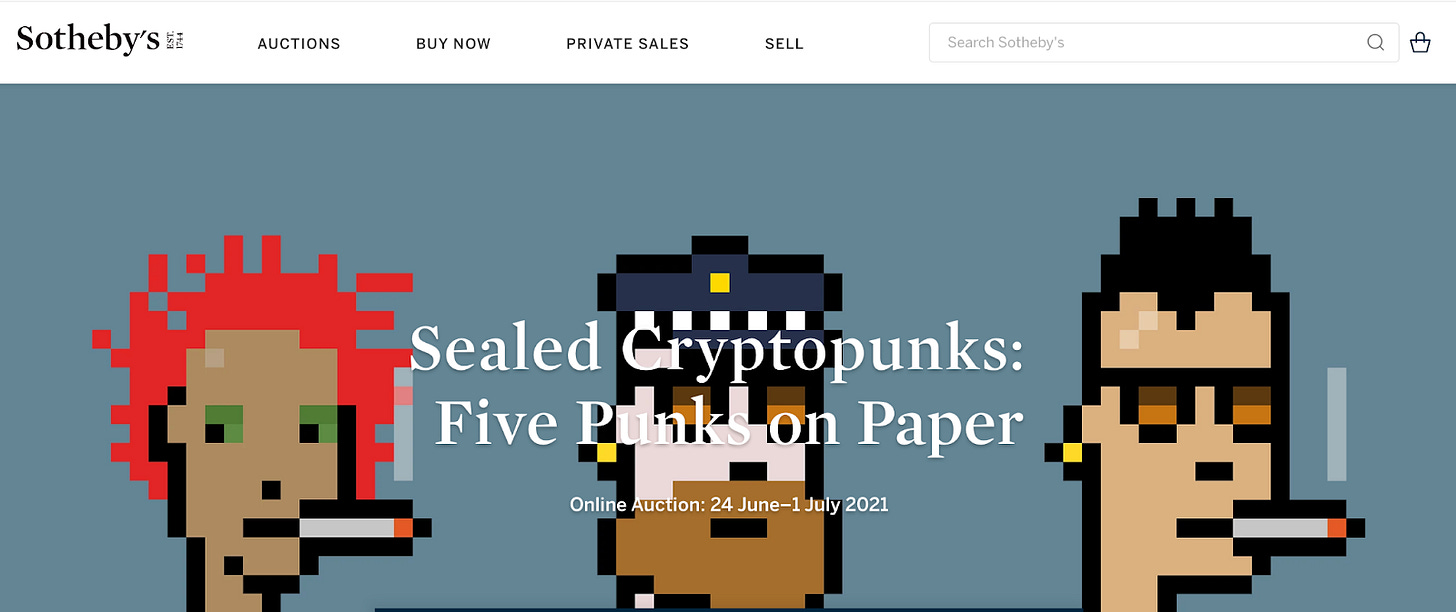New Industry, Old Lessons
The Psychology of Persuasion in NFTs
NFTs are the best training grounds to learn about psychology.
Time-tested principles can explain the emerging behaviors.
I deepened my understanding of this over the past 8 months when my job has been to create NFTs that people want to buy. There are many decisions from price, quantity, utility, and art that persuade consumers to behave in different ways.
To make these decisions, I studied the book “Influence: The Psychology of Persuasion” by Robert Cialdini. Then I noticed how the tactics from his book are everywhere across the industry. In particular, companies rely on scarcity, social proof, and authority to influence behavior.
Tactic 1: Scarcity
Opportunities seem more valuable when availability is limited.
Often scarcity is reflected as limited time offers or limited quantities available. Does this language below look familiar?
The limiting factor is likely not too much demand. It’s a persuasion tactic.
In NFTs, scarcity is most felt in the limited quantities available. If everyone can have something, no one wants it. So projects need to constrain supply.
For example, one popular NFT art collection is CryptoPunks. There are only 10,000 unique items. That number could have changed to 1,000,000 with a simple update to a line of code, but that would have dampened the scarcity persuasion.
Today, these are considered blue-chip NFT art, like a Picasso for NFT nerds. It says something about you because you’re one of the few owners. You can see the effect on sales:
This also highlights a counter-intuitive point that you can often drive more sales by decreasing the quantity available.
Tactic 2: Social proof
We often determine what is correct by determining what other people think is correct.
Matthew McConaughey is a brand ambassador for Lincoln cars.
Is he a car expert? I don’t know. But he’s a cool guy and he chose this car.
NFT projects rely on social proof to gain credibility and generate demand: proof points like their social media presence, venture backers, partnerships, media, and employees.
CryptoPunks homepage displays social proof upfront with its press coverage:
A well-known NFT thought leader @punk6529 promotes his Punk as his twitter name and profile picture:
And world class auction house Sotheby’s hosted auctions for Punks last year:
Media and industry leaders deem CryptoPunks as bluechip so the rest of us do as well. Or as Cialdini says “The greater the number of people who find any idea correct, the more the idea will be correct.”
Tactic 3: Authority
We have a deep desire to be obedient to authorities, which reduces our need to think for ourselves.
Authority is established through titles and appearances.
Below is the Chairman of the Joint Chief of Staff. Notice his attire and title.
I have no desire to debate him on defense strategy.
In NFT land, the military uniform can be conveyed through a twitter profile picture and bio. It can show what someone has achieved and what they represent. One example is Roham, the CEO of Dapper Labs.
His picture is a rare CryptoKitty, which was the first breakout NFT project and signals he could be a very early collector. He has a Twitter checkmark. He is a CEO with a strong track record of pioneering NFT projects. He is followed by many of the same people I follow in this space.
This is a strong uniform.
When he speaks, my default is to agree with him. Unlike other often louder voices that I’ll show in the next section.
The Dark Arts
Unfortunately these tactics can be engineered in sneaky ways.
Social proof is easy to corrupt. Below is a common practice in NFT land where companies offer free rewards in exchange for social proof. I am not a fan of this. It is not proof that anyone enjoyed the product, it’s only proof they want something for free, often to sell for profit.
As a consumer, it's important to recognize when you see social proof from people not acting based on deeper knowledge, but who are otherwise incentivized.
Authority is easy to corrupt too because 1) it’s easy to fake twitter titles and appearances and 2) NFT buyers crave “alpha” which is early information you can use to make a profitable trade. “Crypto influencers” have seized this opportunity to gain large followings by posting a lot of content people think could be alpha. This person below has many more followers than Roham.
Their expertise is a “collector” which requires only money and enough knowledge to make a purchase. They updated their profile picture to a project that others might respect, but I don’t know it. His job is “influencer” which means his voice can be purchased. An obvious misalignment of incentives if he is to be considered an authority on “working with top projects.”
This person is not an authority. It’s important to ask: are they truly an expert? And how truthful can we expect them to be with other motivations they may have?
It was enlightening to witness the impact of these tactics. As a practitioner, I check myself that I’m using these principles with good intentions, and not to deceive.
And for you, whether it's NFTs or otherwise, it's important to recognize these tactics are being used, and to question the influence it's having on your decisions. If you feel rushed into a purchase, slow down. It’s likely a persuasion tactic.











